- More More
- Blog
- Inspire me
- Groups
- Offers More
- Dive Courses More
- Liveaboards
More

Liveaboard Trips
On-board accommodation offering the opportunity to live right over the dive sites and to experience secluded dives...
Diving regions...
- LATEST AVAILABILITY BY REGION
- Red Sea availability
- Maldives availability
- Indonesian availability
- Socorro Mexico availability
- Galapagos availability
- ALL LIVEABOARD DIVING REGIONS
- Bahamas
- Bikini Atoll
- Caribbean
- Cocos Island
- Destinations
MoreDIVING REGIONS...
Our Top destinations....Why not try....
Find a trip
- Resort
- Liveaboard
Checking in with Emperor Divers'

24 Jun 2020
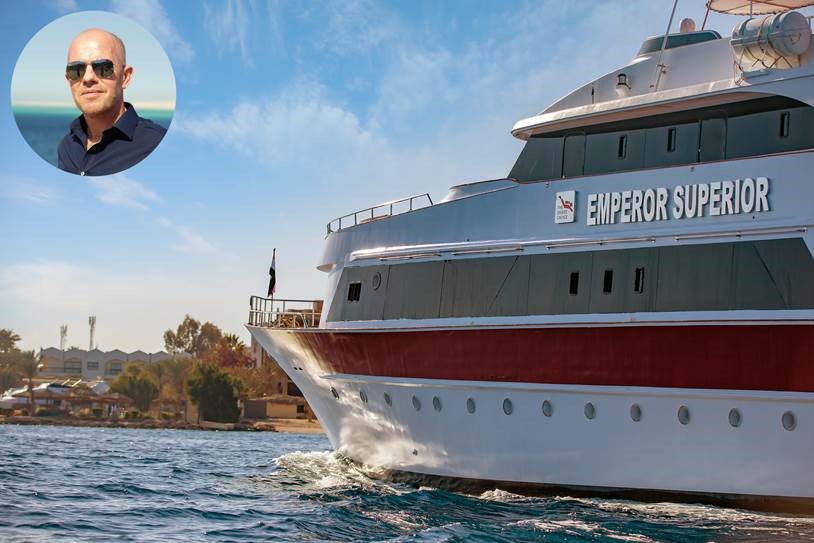
"We have worked with Regaldive since the very beginning of Emperor almost 30 years ago, regularly looking after Regal divers on our boats and at our diving centres, but of course we haven’t had any guests for the past few months and so it's really nice to get this opportunity to update everyone.
The most important part of our company is our team. We have managed to keep the team together and we have been able to support them through this pandemic. Egypt, Maldives and Indonesia actually have relatively few COVID cases, so I am very pleased to say that no staff, nor their families, have been taken unwell by this terrible virus. We have been in contact with our team regularly. Some are posted on the boats while they are anchored up, keeping them safe and maintained ready for divers in the coming months. Others have gone back to their local cities, towns and villages to care for their families.
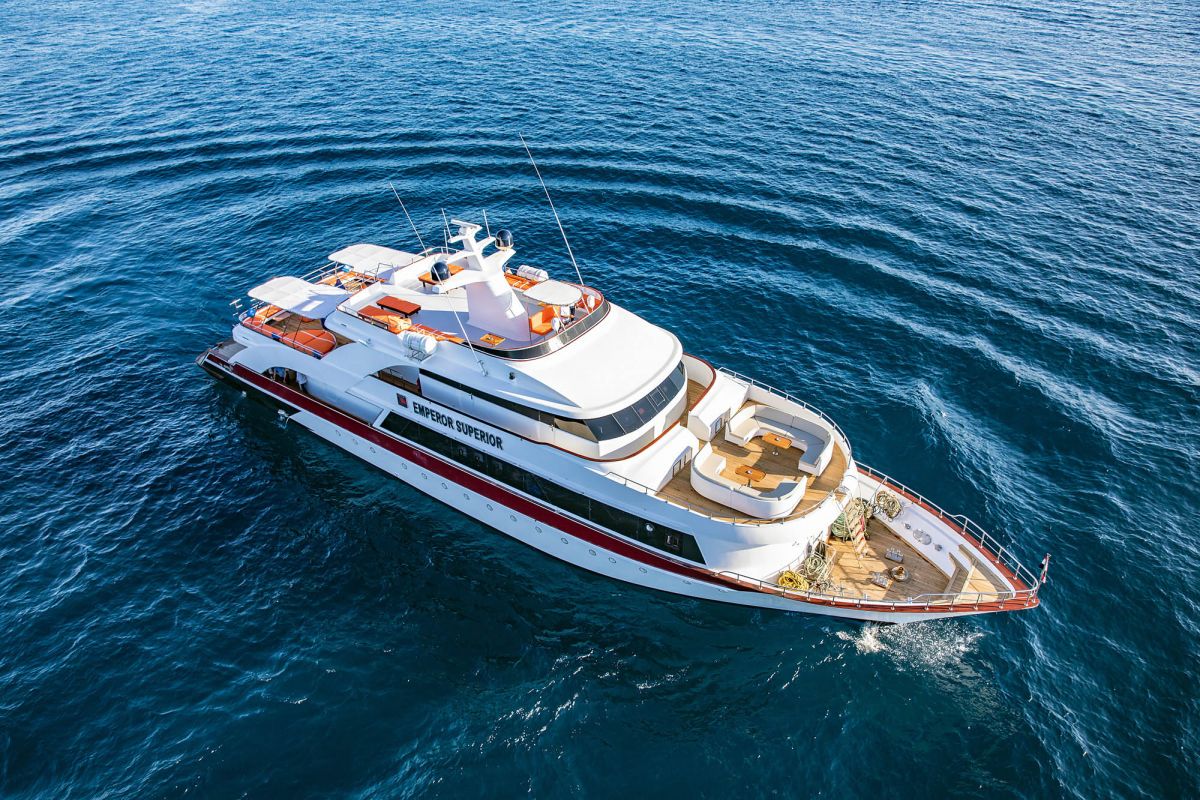
To keep our diving and non-diving guests active, we have been doing live seminars on Facebook. Guides from all over the company have been talking about diving areas, or more general topics such as marine life or seas conditions and diving tips. Tracy has been running The Hatchling’s Club for our younger audience, full of information and facts about our favourite marine animals alongside some craft ideas. All our live talks have had lots of views and we have really loved the interaction that comes from this.
We have our eye on the future and we are getting excited. Restrictions are starting to be relaxed in many countries; borders are opening up. Diving in our three destinations is so close we can taste it! Emperor is trusted to make safety the highest priority. We have operated at the highest level for nearly 30 years now and have an impeccable safety record. Over the decades we have innovated and adapted to make sure we are at the front of the pack when it comes to diver safety and service. We are ready to do so again, and we have a team dedicated to applying solutions to the current environment.
The three countries we work in have started to build a framework of procedures and policies that are still being finalised. Over and above that rest assured we will always follow the latest scientific advice and set the bar for industry best practices. As we get closer to reopening and the science, regulations and advice gets more apparent, we will confirm which procedures will be employed to specific upcoming trips.
We have been securing and maintaining our boats, our diving equipment and training our team; we are ready to go as soon as those first flights land! Egypt has had its fair share of slumps in the tourism business in recent years, and one thing has always been true – after a period of inactivity in the sea, the diving is better than ever. Reefs recover and replenish, and nature never looks more awesome. Be on one of those first flights out if you can, and we will be waiting for you here to get you back underwater with that familiar Emperor service.”

Contact a member of our team or call us on 01353 659999 to discuss your next Red Sea liveaboard adventure.
Find a trip
- Resort
- Liveaboard
Fantastic Turtles
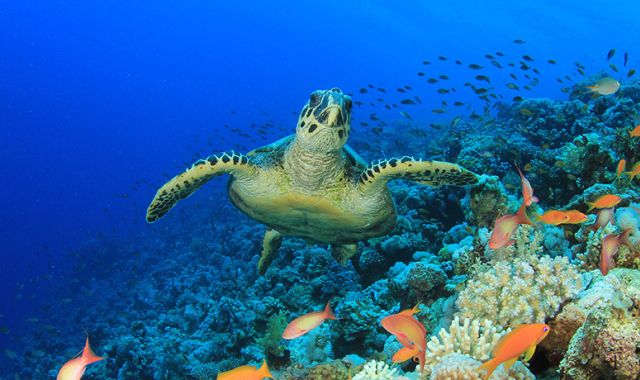
20 May 2020
The turtle has to be my favourite marine animal, and I get excited each time I see a one. Whether it’s a big chunky green or a snappy little hawksbill, I will endeavour to point it out to my buddy using the well-known hand signal we all know and love. My initial bond was formed when I spent some time volunteering at a Turtle Rescue and Education centre on Zanzibar Island ten or so years ago. Each turtle had its own way to say hello every morning when I would approach the sheltered area, they really are intelligent beings.
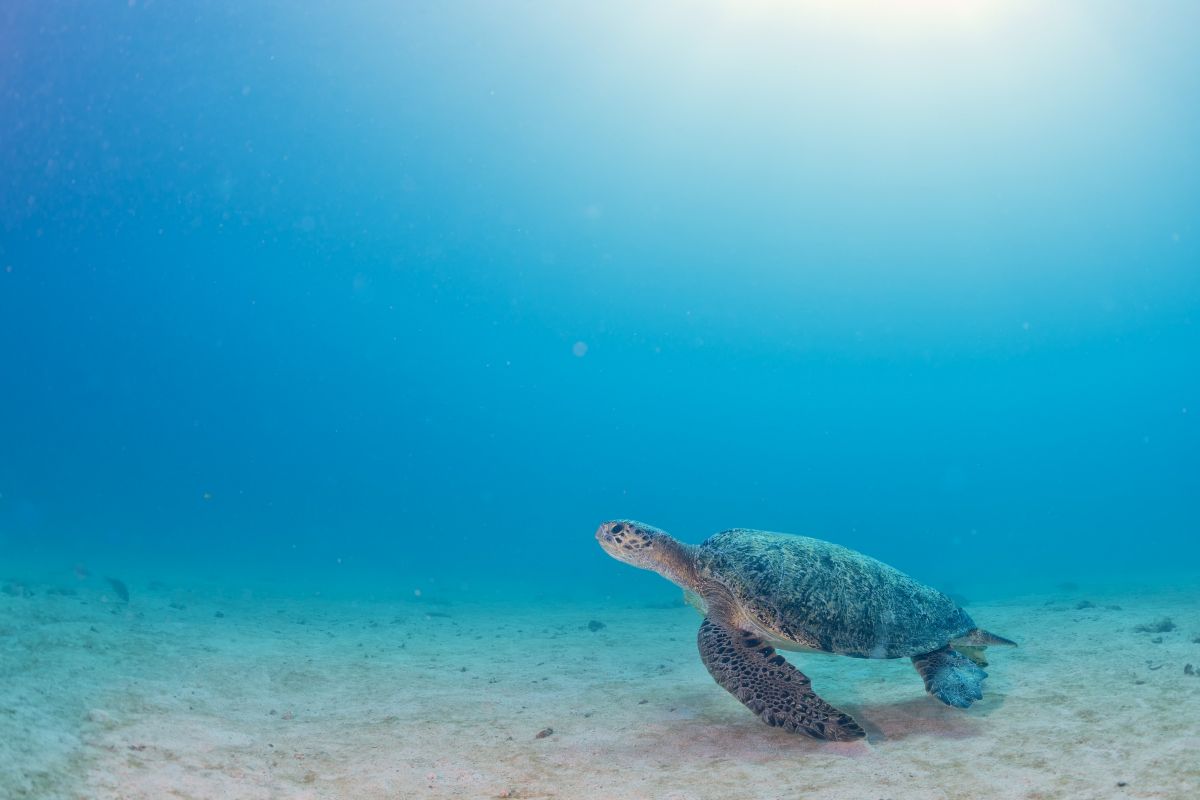
I think turtles are little miracles dressed in a hard shell. Females will lay up to 200 eggs in a single nest, cover them up and wish them the best of luck as she makes her way back to the water. The ambient temperature of the nest will dictate if the turtle hatchlings will be male or female. After 40-60 days the hatchlings will emerge from their eggs and nest and make their way towards the sea guided usually by the moon, starlight, or setting sun. For those that face the perils of the beach dash and make it to the ocean, the next miracle begins as they drift in the open ocean for several years. After this time, they will return back to shorelines and coral reefs, where we divers are most likely to enjoy their company. The turtles often spend large amounts of time in a certain area, becoming residents. Between the ages of 17 and 30 turtles are ready to buddy up with a mate and start the next round of little miracle shelled beings, which they will do every 2-3 years. Now, do they do this on the closest beach because that’s nice and easy? No. The females will return to the beach that she was born on to lay her eggs, sometimes this can be thousands of miles away. How I hear you ask? I like to think it's magic, but the latest theory is that they rely on unique magnetic signatures along coastlines.

Very few turtles reach adulthood for various reasons including human interference, the ones that do are able to contribute to the next generation. Currently six of seven species of turtle are facing extinction. Each time I see a particularly big turtle, I get super excited. Depending on the species, turtles need between 10 and 50 years to reach sexual maturity, so these large adults are a key component to their species survival. Although it may seem like we regularly spotted these nonchalant creatures on dives, their numbers are in danger. Research projects such as HEPCA work hard to collect data on turtle behaviour, focusing on feeding and nesting grounds to understand the essential role they play to help keep the Red Sea healthy.
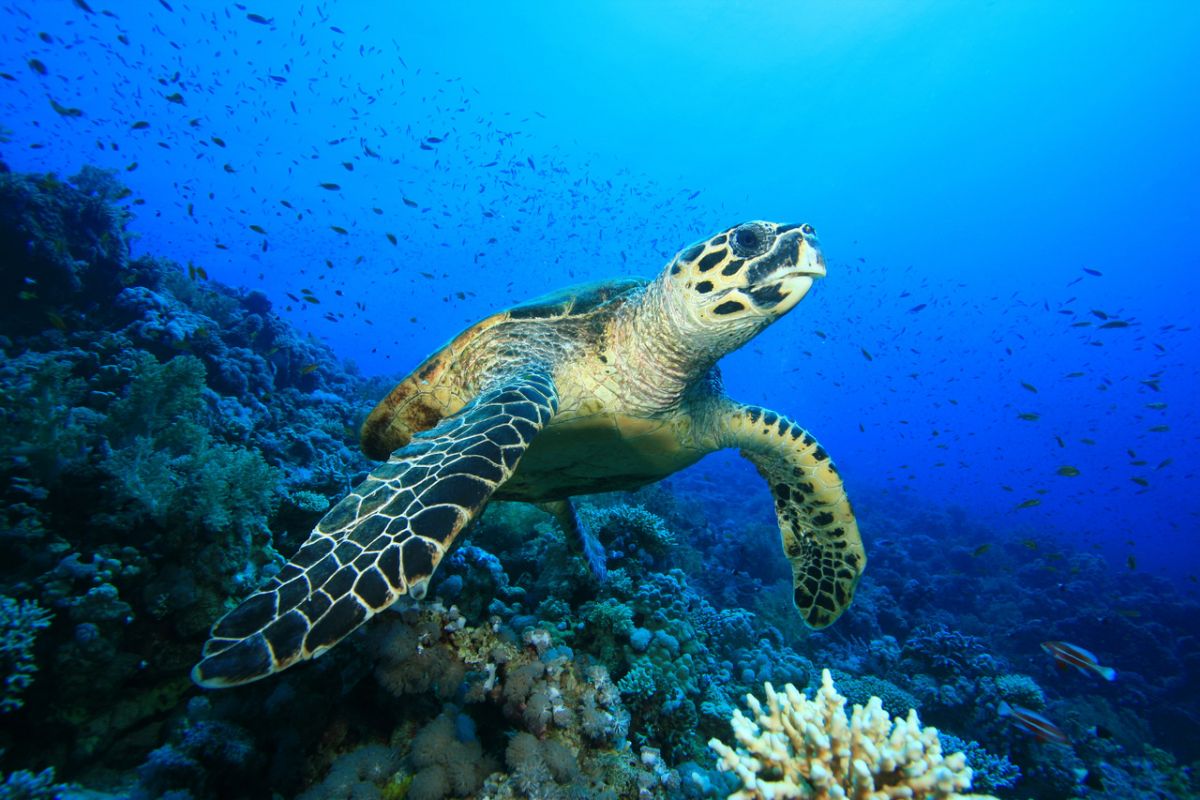
Some of my best turtle sightings have been at Apo Island, Dauin in the Philippines, Tulemben and the Islands in Bali, and the Red Sea. Turtles can be spotted in all tropical waters, and if you want to see them surrounded by beautifully healthy coral that’s teeming with marine life then you need to add Apo Island, Dauin to your bucket list. So during your next surface interval keep your ears open for the gasps of breath and your eyes out on the water to spot a mouth and nose partially beaching the waves, with the promise that you’ve got a little hard shelled miracle to look forward to on the next dive.
Find a trip
- Resort
- Liveaboard
Scouting out Sharm
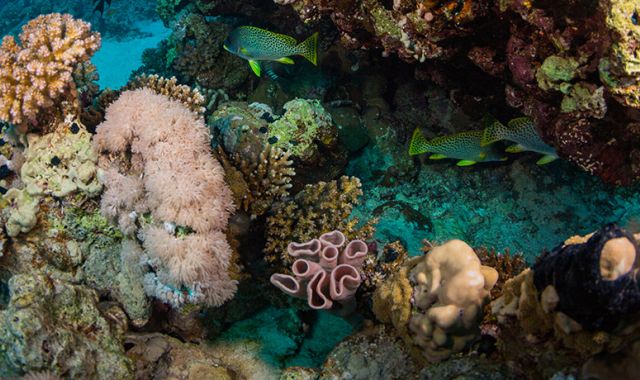
11 May 2020
Having never been to Sharm el Sheikh, the Red Sea or even Egypt before, visiting this part of the world seemed like a wonderful opportunity to provide a first hand experience of the area as well as visit some of our partners. With this insight I would then be able to pass on key information to those who have never been to these resorts or Sharm el Sheikh like myself.

I spent time with two of our partners out there, one fantastic new addition and one long time favourite. The first was Shark’s Bay Umbi Village, a veteran in Sharm el Sheikh but a newcomer to the Regaldive fold. This diamond in the rough provides a unique experience unlike anything you would find in Sharm El Sheikh. I was picked up from the airport by their minivan airport transfer, no more than 10 minutes later I had arrived into a Bedouin ‘snow globe’, the first sight, carved into the cliffs face are their mainstay rooms that stay true to their culture. Weaving through the passageways of doors either side appearing as if from nowhere, felt like I had fallen into the pages of a children’s book.
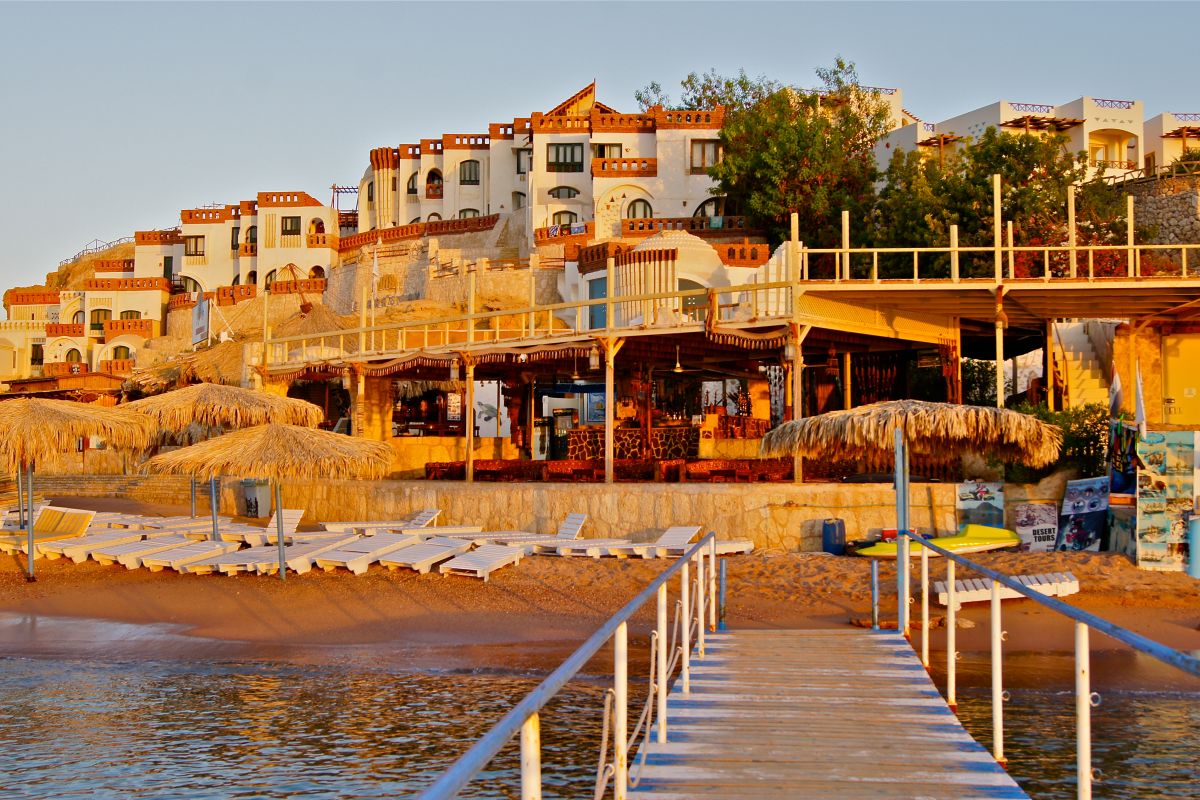
The local staff all live on site in true Bedouin fashion like one big family. At the head of this family is the founder and namesake of this diving ‘village’, a man called Umbi, if you take a moment and ask anyone who works here about him they will tell you amazing stories of his life and true testaments of his character.
The saying “…you come as a guest but leave as a friend” is thrown around so much but never has it felt truer than when you stay at Umbi Village. The staff here sit and chat, they take care of you and would bend over backwards for you, until you realise that they’ve become more than just a friend - they begin to feel like family too.
You’ve woken up, walked out onto your balcony and took in the stunning scenery with a clear view of the island of Tiran across the water. Your tummy grumbles, reminding you that you need breakfast, after taking a brief stroll passed the Bedouin tent you reach the restaurant where a buffet is waiting for you complete with a cook ready to make your omelette whichever way you like. The perfect way to start the day.
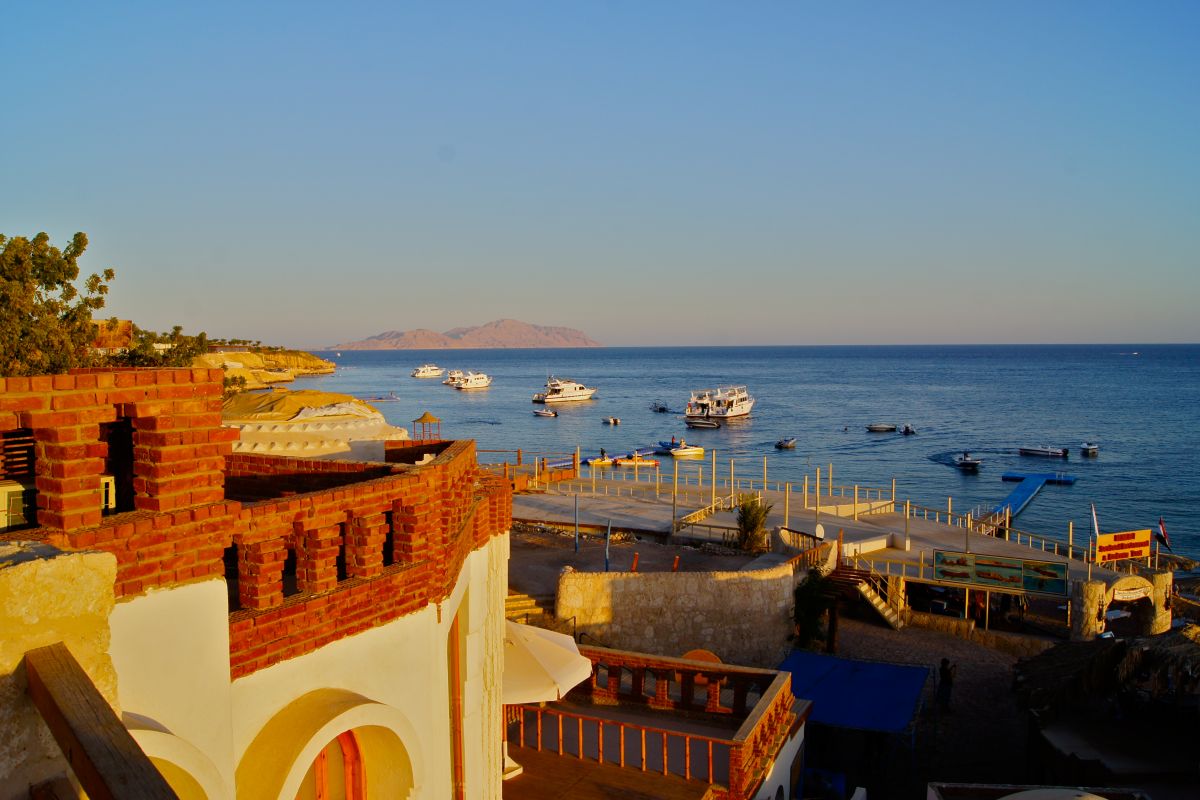
What is to be said for the experience on land remains true for the sea, a short walk down their own jetty and you’re on one of their magnificent vessels that are capable of not only providing a gateway for day diving but also a liveaboard experience from mini 3-5 day safaris up to a full week.
The pristine Reefs of the Tiran Strait are just 25 minutes away by boat (or 10 by speedboat). Gordon Reef can be seen first as the wreck of the Louvila sits on top of her. On a gentle drift dive I enjoyed a large plateau of porites coral that was teeming with schools of yellow goatfish. At the drop off you might be lucky enough to see a white tip reef shark cruising below or huge tuna in the blue water. Barrels that fell off a cargo ship in the 80s have formed an artificial reef on the sand, housing territorial anemone fish and wrasse. I witnessed blue-spotted stingrays sheltering underneath the many table corals here and a hawksbill turtle fed on the abundant broccoli coral. This area enjoys currents from very deep water funnelling over the shallower saddles of the Tiran reefs – one of the reasons it is so rich.
The dive crew are on hand to make every part of your dive trip effortless then in between or after your dives there is plenty of space to relax on the upper sun deck whilst indulging in a delicious catered lunch.
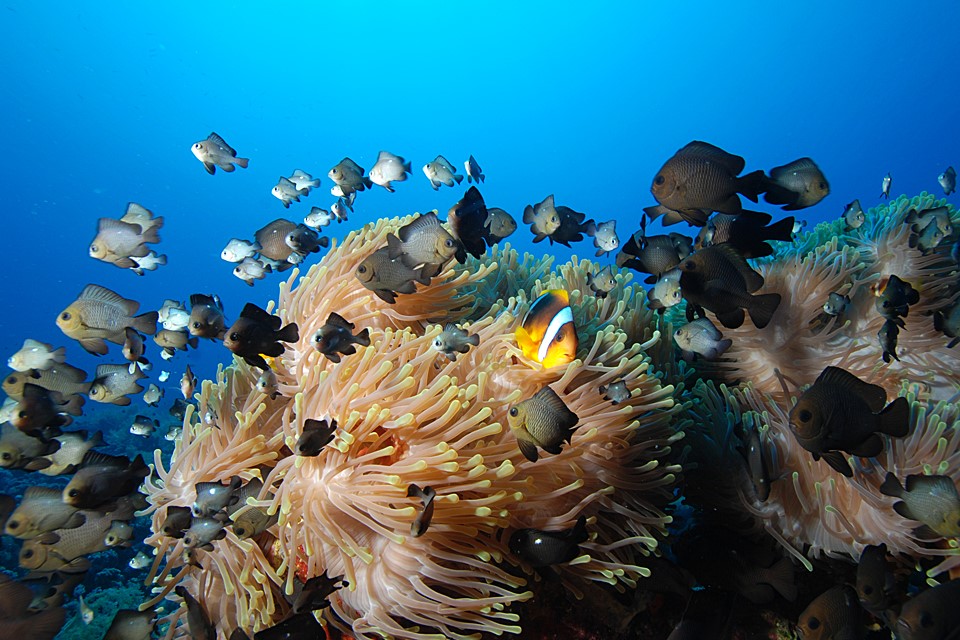

Back on land you’ve rinsed off and got comfortable again and are ready for your dinner, arriving in the Bedouin tent is a glimpse into their pure way of life. The seating areas with cushions on the ground to sit or lie on is a comfort like no other. Once settled, you can order from their a la carté menu with features a wide variety of choices such as wraps, pizzas, pasta dishes to name a few. The chicken bedouin roll is my personal favourite. Finishing off your day with a glass of your favourite drink and a bit of shisa should that take your fancy.
Before you’ve even left this haven you’ll be planning your next trip to come back and see your friends.
Camel Dive Club is a resort that’s reputation is renowned. Situated in the centre of Sharm El Sheikh a short 200m walk to the beach, this is a complex comprised of a hotel, dive centre and restaurant, with each section requiring its own personal mention without ever feeling like they are separate in any way. This is a place that was intentionally and perfectly designed for the needs of a diver.

The hotel rooms surround the training pool, these spacious rooms complete with large comfortable beds and an en suite shower room is the luxury you will look forward to after your diving when you’re sat on your balcony enjoying the evening sun.
The dive centre is the social hub, whether or not you’ve been diving that day they're always wanting to talk about all things diving. State of the art classrooms for courses and any tec requirement you may desire, they can accommodate.

Lastly the restaurant, Pomodoro, a delicious breakfast buffet to kick off your day or a classy evening meal to toast a fabulous day of diving, either way a food coma will be waiting for you at the end.
Camel Dive Club is more than just a resort, it is it’s own little world in Sharm El Sheikh, one that will be always be there waiting to take you on your next adventure.
Speak to a member of our team to discuss Sharm el Sheikh diving holidays.
Find a trip
- Resort
- Liveaboard
Why I Love Whale Sharks
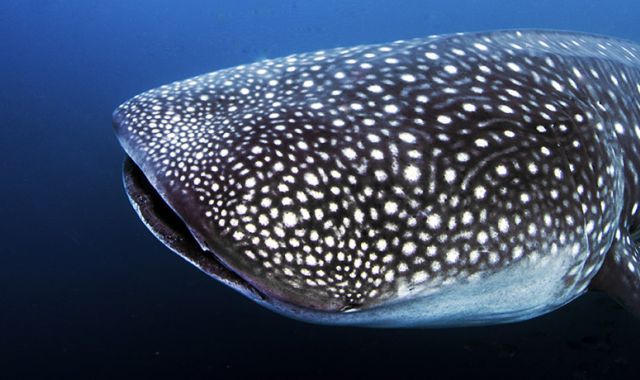
5 May 2020
At first, there were many near misses. We’ve all been there. You return to the boat from a dive to excited chatter from your fellow divers about their thrilling marine life encounter; and endeavour to share in their delight as they recount their tale while querying how on earth you managed to miss it. Or maybe you pick up on the buzz of excitement on a dive, or hear the frantic attention grabbing exploits of a dive guide only to miss the reason for all the excitement.
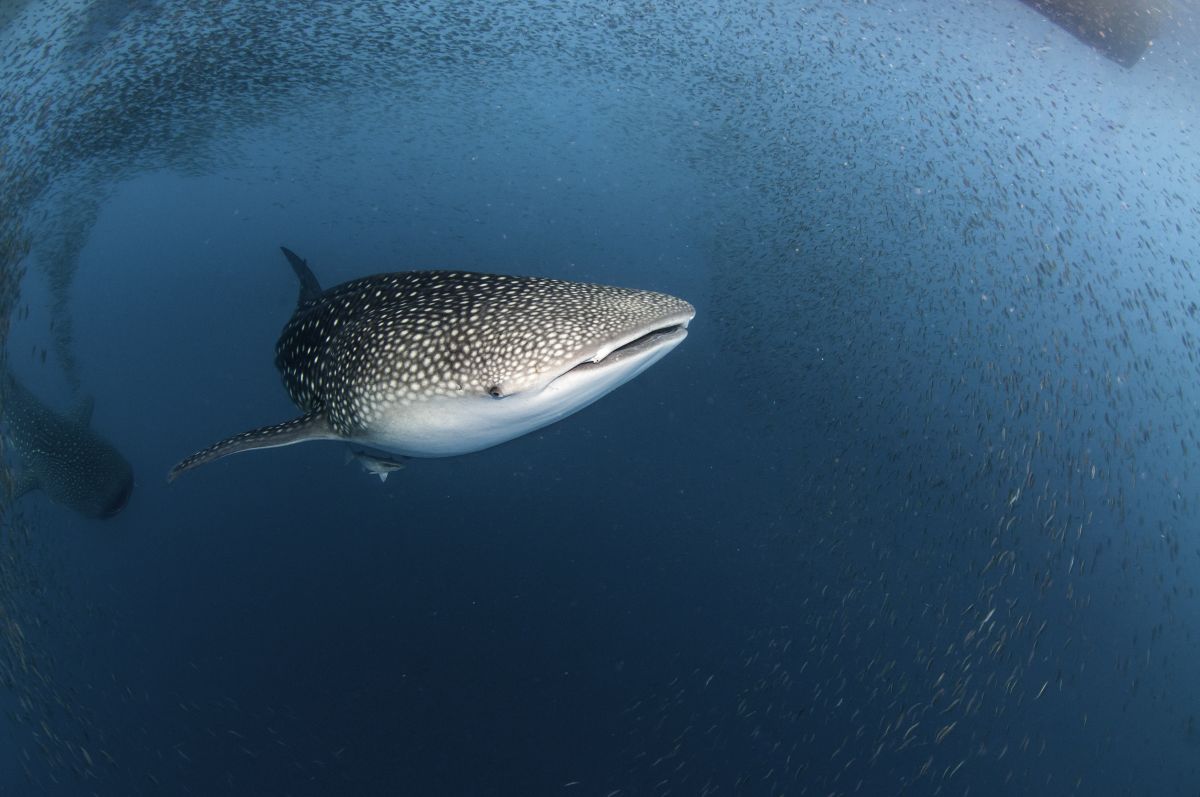
In truth, these moments just add to the joy when you finally enjoy that thrilling encounter you’ve been longing for. That was very much the case with my first ever whale shark encounter, which I remember vividly to this day. I was working as a videographer on the Andaman Coast of Thailand. Having got the required shots of divers swimming through a photogenic underwater cavern, I exited into the blue to hear that distant but slightly frantic tinging on a tank. Here we go again, I thought. But wait, what’s that. Oh my. A shape was emerging in the distance. Or was it? Yes, it was. Definitely, and it was getting closer! As the scene unfolded, the whale shark made a beeline right for me. The Andaman coast of Thailand is thought to be a nursery area, and this young whale shark was without doubt curious by nature. We shared a magical encounter, and my love affair with whale sharks was born.
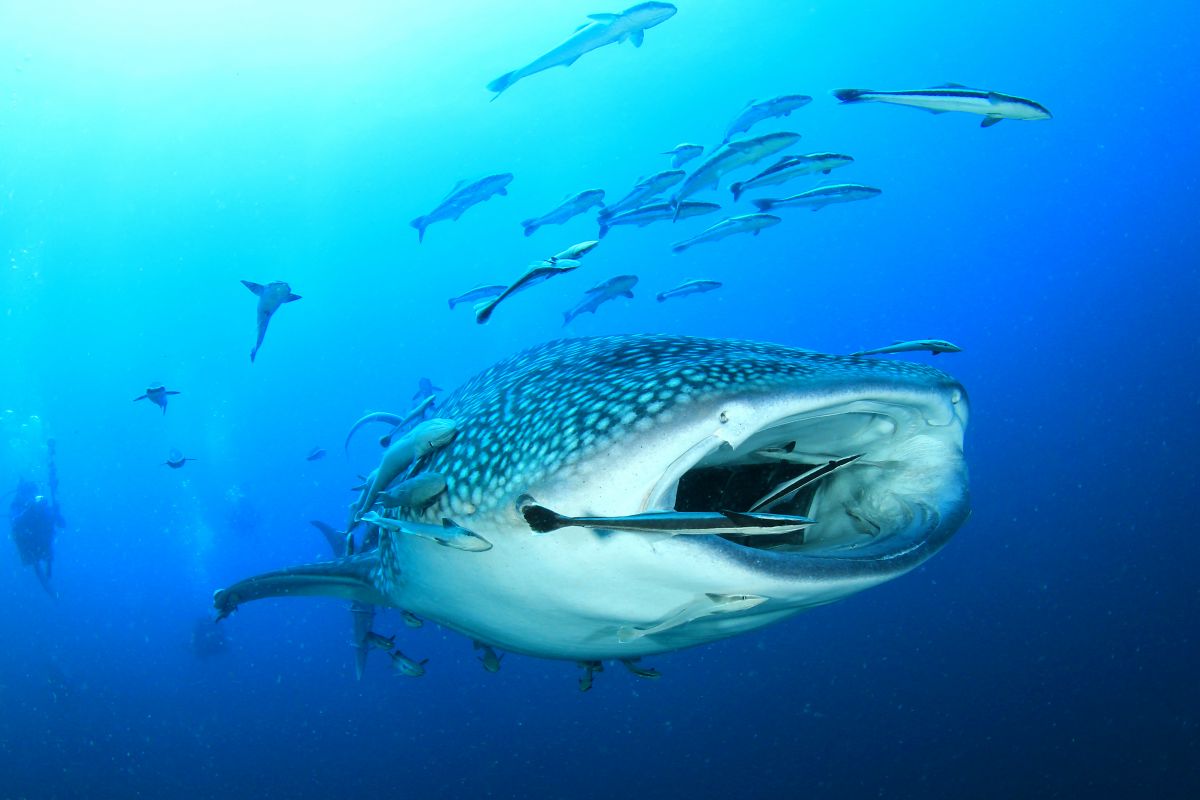
These gentle giants are a much sought after animal for many divers and snorkellers, and for good reason. Growing up to 18 metres (albeit most likely closer to 10), they seem to emanate a friendly and curious nature, and are thought to be so ancient that they may even pre-date the dinosaurs! While they are found in tropical waters all around the globe, and can often be encountered by lucky scuba divers, they continue to have an air of mystery around them. Their breeding and birthing grounds are not yet known, although the presence of large pregnant females in the Galapagos Islands suggest this is a hotspot. St Helena in the mid-Atlantic has also become known recently as a place where both adult males and females intermingle, giving rise to the idea that this is also a crucial habitat. In many places where they are found, such as the Maldives or Mafia Island in Tanzania, it is thought to be adolescent males that tend to gather together.
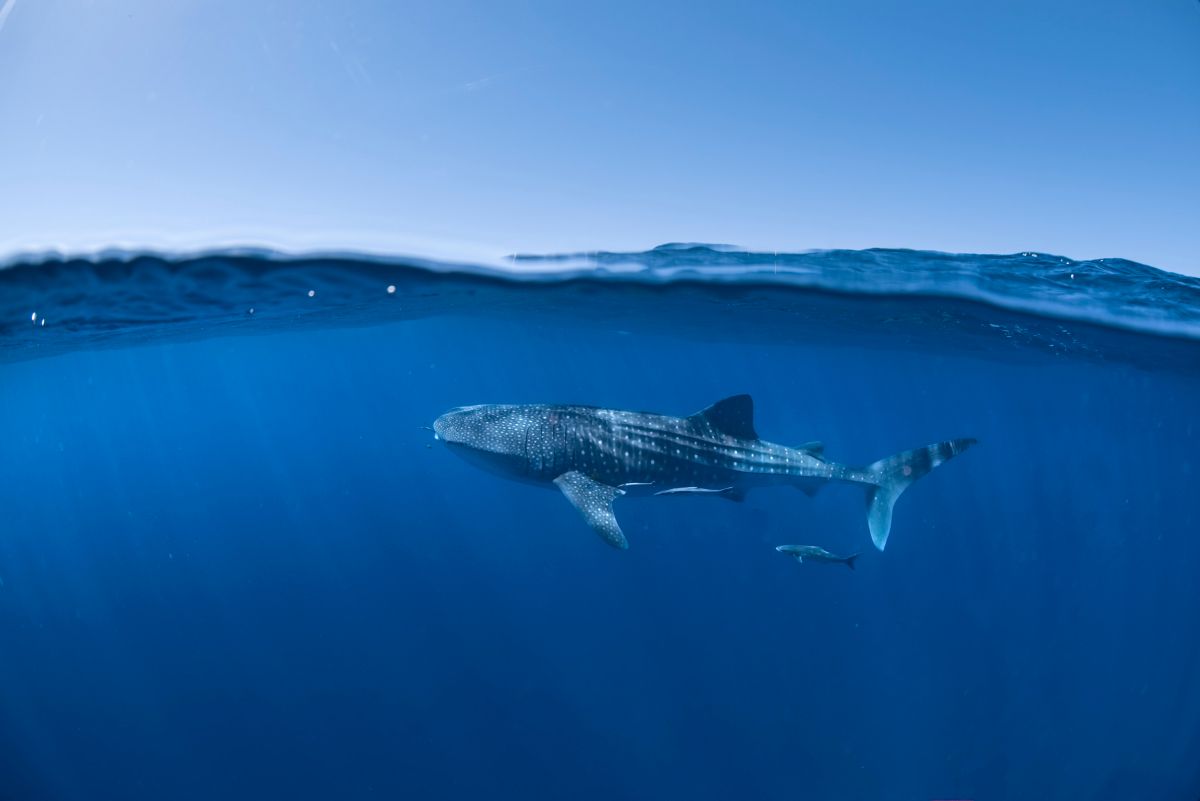
No matter where in the world or how fleeting, any whale shark encounter is likely to stay with you forever, and like me, you will begin a lifelong love affair.

If you would like to have the chance to encounter one of the most impressive animals to grace our oceans, speak to one of our friendly Regaldive team today!
Find a trip
- Resort
- Liveaboard
Noble Nudibranch
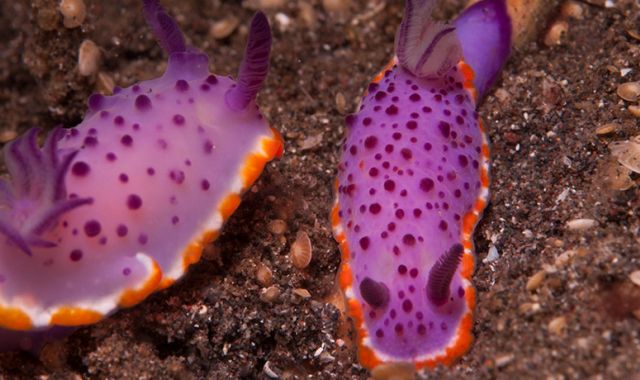
28 Apr 2020
Nudibranch means ‘naked gills’ and these slippery little jewels live their fairly short lives with their gills on the outside of their body. Yet they aren’t afraid of the presence of a human and pose perfectly for the underwater photographer. It is a thrill to frame them as the main subject of a “still” life and catch their bright, delicate gill appendages swaying in the current. Front rhinophores stand to attention like feathers in winter’s first frost and fuchsia-coloured mothers (or is it fathers?) lay delicate egg circles. To appreciate the tiniest nudibranch however you need to be armed with one of two things – a magnifying glass or super macro lens. Only then can you truly witness this colourful underwater creature.

The crème de la crème of the nudibranch photograph is capturing the moment a cleaner shrimp or parasite hitches a ride on their back, an underwater Aladdin on his magic carpet. Every year underwater photographers of all abilities join the Anilao Shootout in Bantangas or the Lembeh Shootout hoping the genie will grant them just one wish: the best images of these beautiful critters.
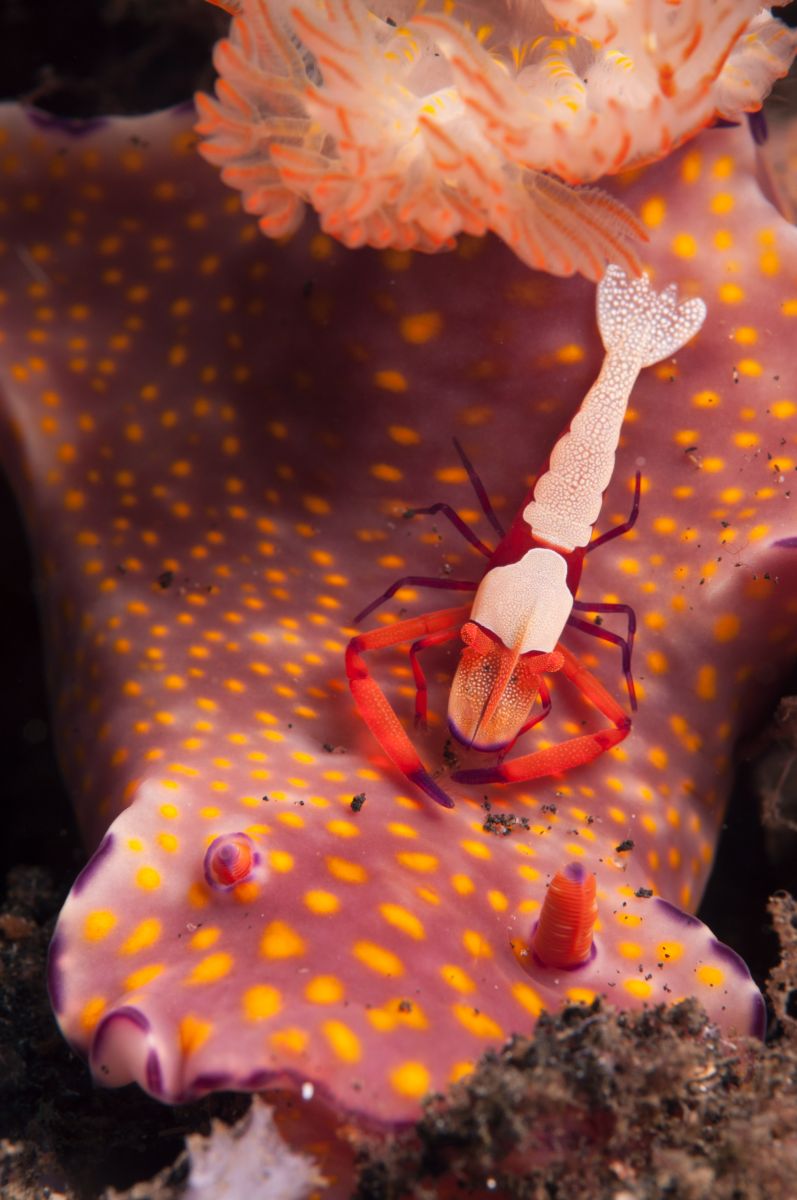
The vivid flecks of dots and dashes along the slug warn predators that they wouldn’t be a tasty meal. They prey on sponges, anemones and other marine life while occasionally even turning to cannibalism! They are very clever when it comes to meal times and have a penchant for turning toxins into defensive mucus. They store stinging cells that they have eaten in their cerata until it is needed for defence.
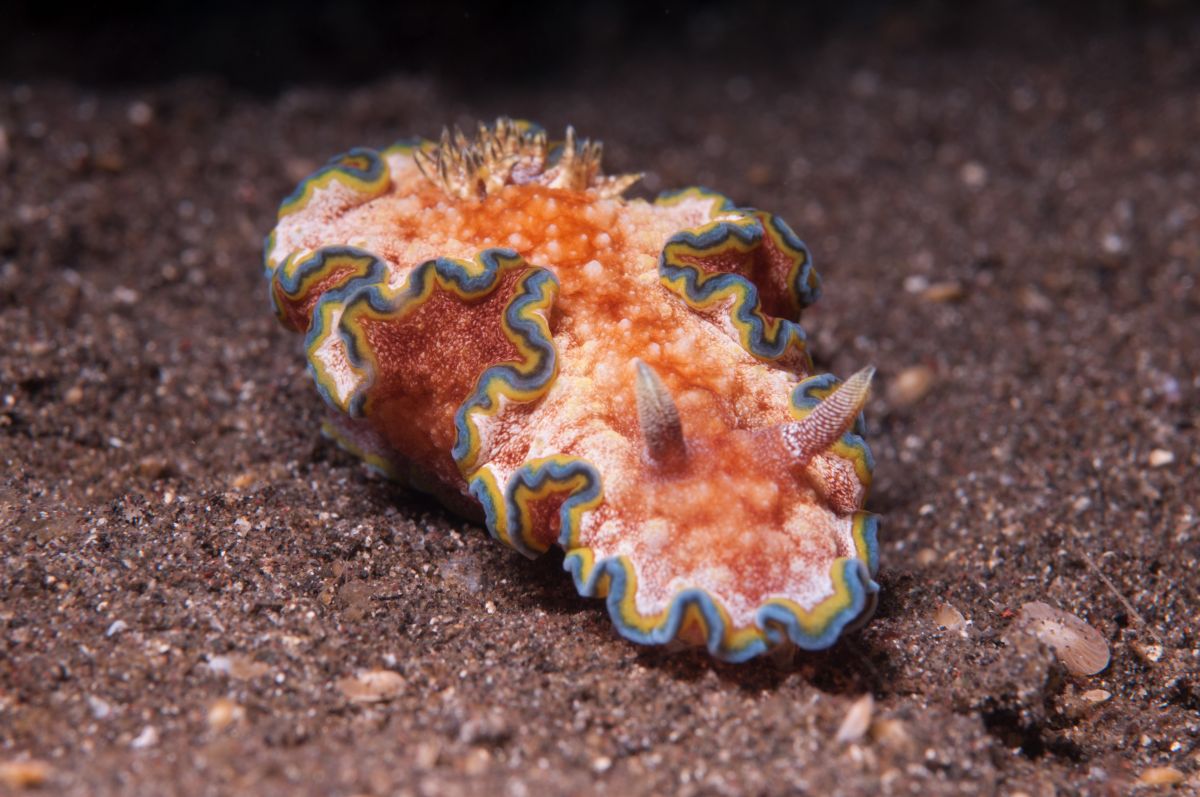
Spotting nudibranchs amongst the sea bed is like looking through a kaleidoscope. Bright lightening-white ardeadoris stand out in a sea of muck in Moalboal, while dark and gloomy funeral jorunna prefer to flaunt their gothic image next to the rainbow colours of the reefs in the Visayas and the Bunaken National Park. The go-faster stripes on a chromodoris give a false sense of speed in this world of the slow! While 'pyjama' usually means bed time in our world, in theirs it is time to get psychedelic! Powder blues and baby pink gastropods rear up like garish mini-pythons as you close in with your strobes primed and ready to flash; blue dragons sway from side to side shrugging their tendrils in the open water with ambitions of becoming alien craft; flabellina curl their back inward like circus acrobats.

Phyllidiella pustulosa, phyllidiopsis, ocellated wart slugs, nebrotha guttata – how on earth did scientists come up with such ugly names for these stunningly surreal creatures??
Images by Cath Bates
Find a trip
- Resort
- Liveaboard
EARTH DAY 2020
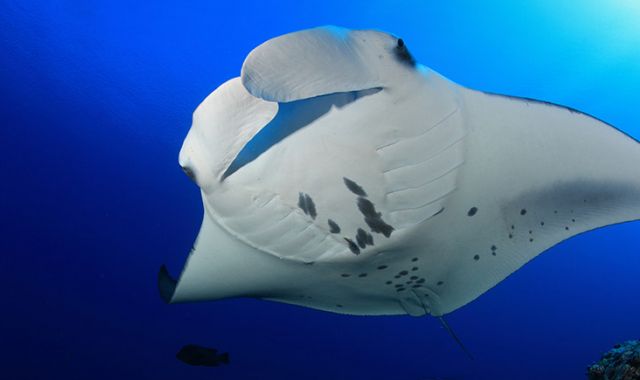
22 Apr 2020
In July 2013 at dive site Ras Umm Sid, guides at Camel Dive Club in Sharm el Sheikh encountered Ariel, a 4 metre giant manta ray (manta birostris). This was not a one-time lucky sighting however as our sales consultant Cath (who once ran their Eco Tribe department) had already spotted Ariel at the same dive site in May 2012.

How could they be sure it was the same animal? Fortunately Cath had photos of both sightings and by matching the markings on the belly she was able to positively identify Ariel. Each manta ray has its own individual belly markings that act like a fingerprint but depending on the size of your archive, manually matching manta photos can be very time-consuming. Therefore a Cambridge professor teamed up with Marine Megafauna Foundation to develop a computer algorithm which identifies manta rays by their markings. This algorithm was integrated into the first global online database for manta rays called Manta Matcher. According to scientist Andrea Marshall, the groundbreaking system “will revolutionise global research on these threatened rays and help change the way field researchers approach scientific research on wild animals by means of successful and meaningful public involvement.” At the time Andrea was so excited about Camel Dive’s photo match of Ariel that she described it at the National Geographic Explorer Week in Washington DC!
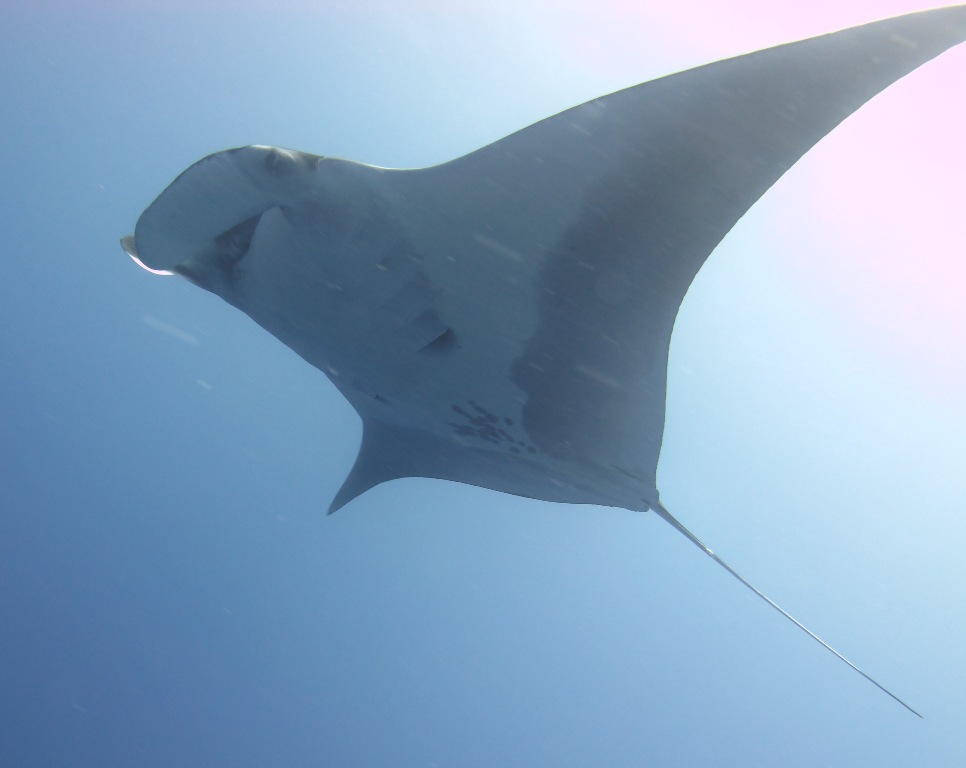
Manta rays do not just migrate through Egypt however. Many of our partners abroad take great pride in actively encouraging manta ID. The Nautilus liveaboard company have a library of previously identified individuals in the Socorro Islands and give a presentation during the trip about giant Pacific manta rays. Both Manta Point and Manta Alley in the Komodo National Park are world famous for their aggregations of reef mantas feeding and being cleaned. Local liveaboards contribute their encounters to various databases including Manta Matcher as well as logging any injuries or deformities they come across. Also in the Maldives, Emperor Divers help log the mantas local to the Northern Raa Atoll for the Manta Trust database.
So unearth those belly shots of manta rays from your holiday and submit them as an encounter on the Manta Matcher website. Upload the photograph along with the date, time, depth and dive site. You will be helping to conserve the smartest fish in the ocean. This World Earth Day make small impacts matter!
Find a trip
- Resort
- Liveaboard
Enchanting corals

7 Apr 2020

Corals are marine invertebrates within the class Anthozoa and phylum Cnidaria – incidentally the same class and phylum that sea anemones belong to. The individual coral animal is called a coral ‘polyp’ and typically many identical polyps will join together to form the overall coral colony.
Image by Emily Chappell
Many types of coral exist, but the two main groups are hard and soft corals. Hard corals are reef-building corals and are primarily responsible for depositing calcium carbonate through the process of calcification; governing three-dimensional reef growth. Reef growth depends on several factors including temperature, irradiance, pH, salinity, nutrient availability and water turbidity. Corals’ stringent growth requirements generally restrict tropical reef distribution to between the tropics of Cancer and Capricorn (30oN and 30oS of the equator) as these latitudes have a sea temperature range of 18-36oC. Well-known for its high diversity of corals, The Coral Triangle is one of the best places for reef diving, extending from Indonesia to the Philippines, and reaching the Solomon Islands in the Pacific Ocean. The distribution of corals allows us as divers to enjoy the beautiful structures in which they form and reap the benefit of diving in nice warm seas in the process!
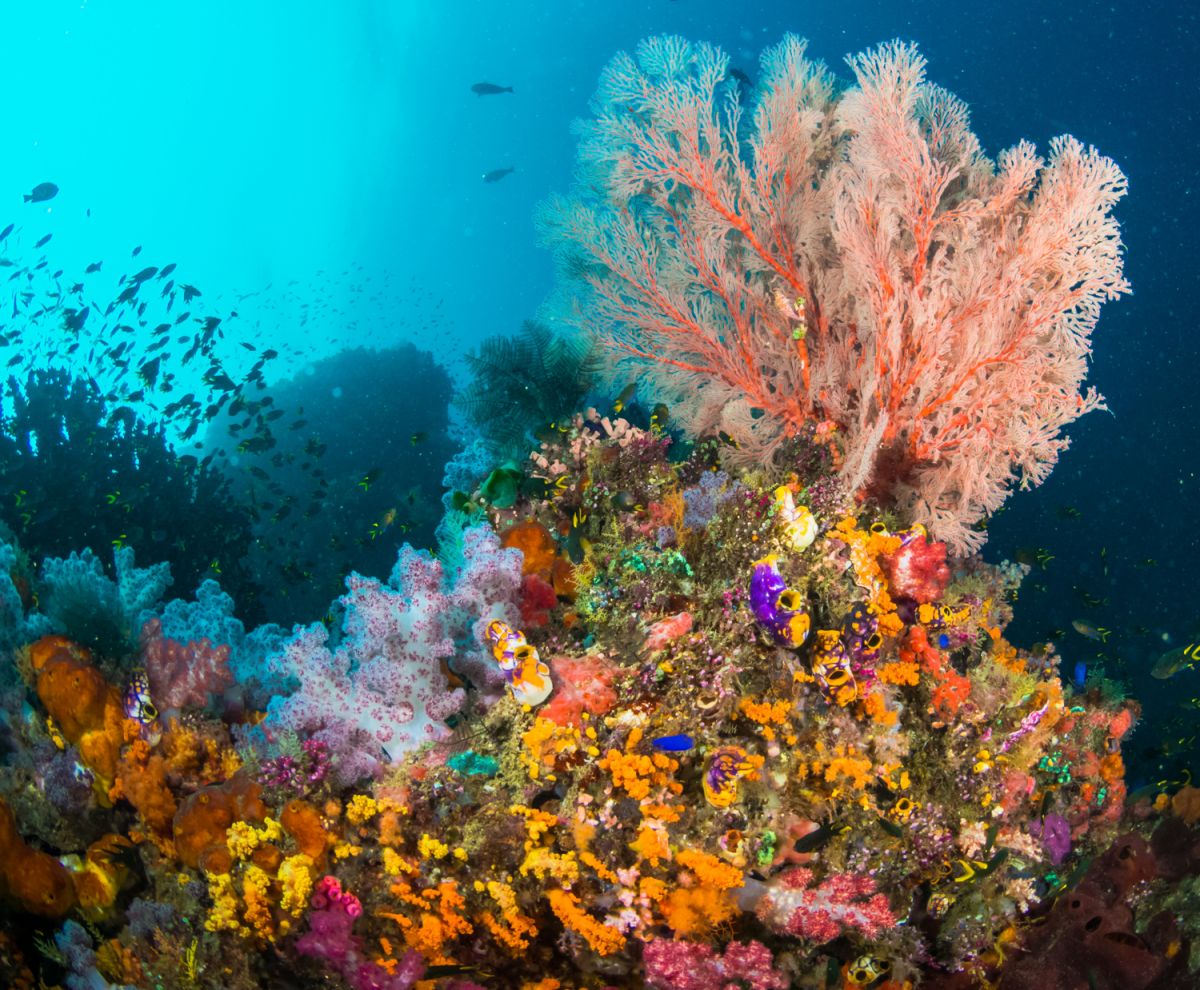
Most corals contain single-celled algae called zooxanthellae (pronounced zoo-zan-tha-lee), which are plant-like organisms. Housed within the protective surroundings of the coral tissues, these microscopic algae utilise the coral’s metabolic waste products for photosynthesis. In turn, the corals benefit as the algae remove wastes and produce oxygen and organic products from photosynthesis that the corals need to grow and thrive.
Image by Emily Chappell
This mutual relationship is why hard corals have proven their worth as effective reef-builders for over 250 million years. They have created some of the largest living structures to date and the longevity of their ecological communities rivals that of vast forests on land. What more can you ask for from your favourite animal?!
Find a trip
- Resort
- Liveaboard
The wonderful octopus

1 Apr 2020
There are a few hot spots where sightings of octopus could almost be considered common place and these tend to be the muck diving capitals of the diving world. A number of locations within the coral triangle are famed for providing the perfect habitat for our eight armed friends- that’s right; arms not legs or tentacles.
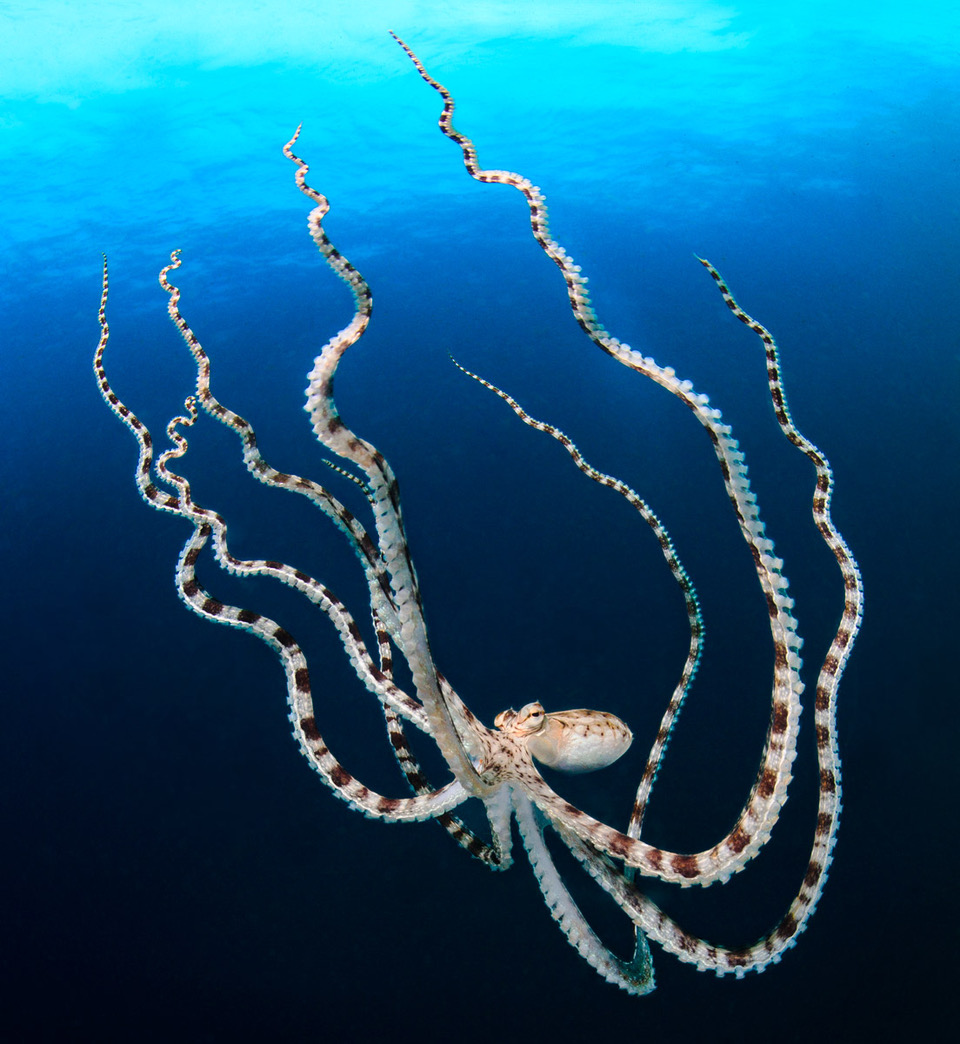
Image by Bernard Ravener
Lembeh Strait in Indonesia is often thought of as the premier muck diving destination and if luck is on your side it’s here where you can expect to have encounters with the enigmatic mimic octopus. Their uncanny ability to imitate more than ten different animals including lionfish and flatfish is unique to this most bizarre and advanced mollusc.
In Bali and North Sulawesi the octopus opportunist has the chance to spot all manner of critters including the fascinating coconut octopus, named for the behaviour it exhibits when using coconut shells to conceal itself from would be predators. When they’re not displaying this clever trick they’re often buried in the sand exposing only their eyes.
A visit to the Philippines to Anilao or Bohol should also be on the bucket list if like me, the octopus ranks highly on your favourite species list. It’s possible to see the tiny but highly venomous blue ringed octopus which technically has enough venom to kill upwards of ten grown men! All octopodes have venom but the recorded number of total deaths worldwide from the blue ringed (the most venomous) is thought to be no more than a dozen or so. When approached sensibly and with caution they do not pose a significant threat to a diver.
The octopuses (not octopi) ability to solve problems and puzzles is the subject of scientific research and ongoing questions about their intelligence. Their lifespan can be less than 6 months, with the largest of species - the giant pacific octopus - living the longest at just 3-5 years in the wild. They are also the most devoted mothers on earth, with mother’s starving themselves and sacrificing their own lives to protect and nurture their eggs. Males are rather less impressive, and are thought by some to lose much of their memory after mating.
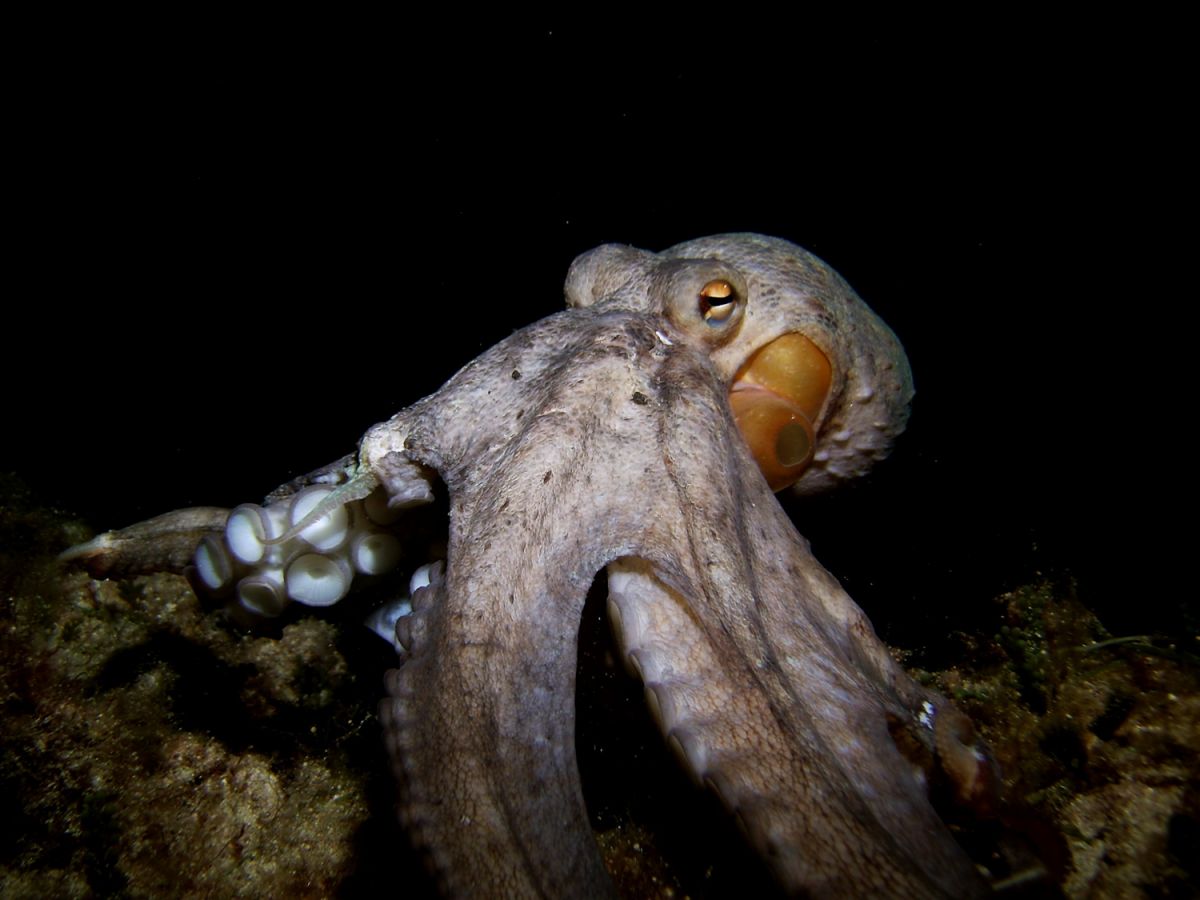
With a central brain and large numbers of neurons within the skin acting as ‘mini brains’; controlling each arm independently, three hearts, blue blood and the ability to camouflage by changing both colour and texture it’s easy to see how this seemingly alien creature captures the imagination. As a recreational diver and general enthusiast, I always keep my eyes peeled whenever I’m in octopus territory. A sighting no matter how fleeting it may be always makes me smile.
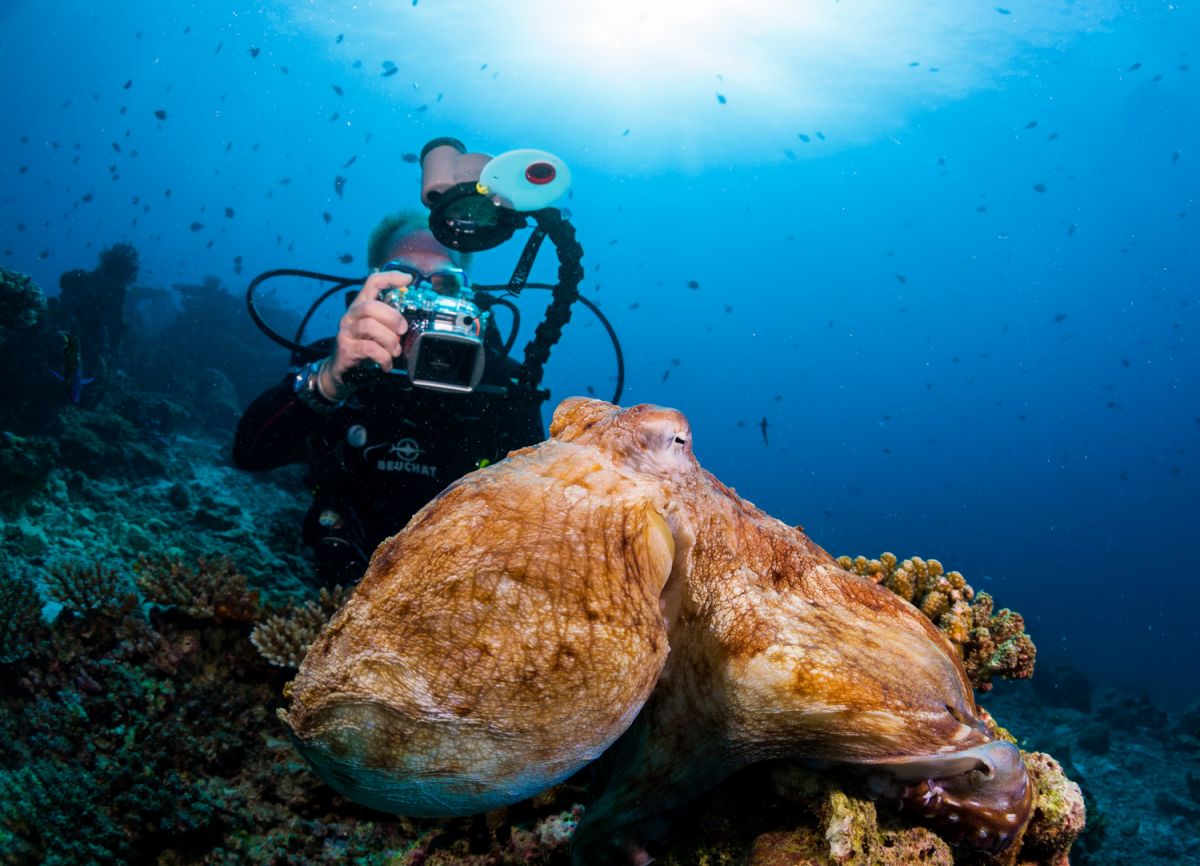
What’s your favourite marine creature?
Find a trip
- Resort
- Liveaboard
White Sands Beach Resort
Flight time: 17 hours
Water temperature: 24 - 28°C
Highlights on land: Tangkoko Nature Reserve
Highlights underwater: Lembeh Strait
Overview
White Sands Beach Resort offers visitors a unique and relaxing environment on Lembeh Island, with its flat white beach, and a convenient location for easy access to the best dive sites in the Lembeh Strait. Daily boat dives operate from the jetty and the house reef offers an incredible experience especially for snorkellers.
The intimate resort offers a personalised service and exceptional cuisine. With an incredibly experienced team, hospitality here is second to none.
Eco Divers are an environmentally responsible operator and have been single-use plastic free since 2010. In addition they are socially responsible to their staff and suppliers. They are a proud partner of the Lembeh Foundation, an organisation which aims to empower the people of Lembeh for a brighter future through three main programmes (supporting local community projects, educating the children and helping reduce single plastic waste on Lembeh Island). For more information on the Lembeh Foundation please visit https://www.lembehfoundation.org
ACCOMMODATION
Surrounded by palm trees and tropical fauna, the resort features 12 individual beachfront cottages with a wooden terrace and over sized windows offering panoramic ocean views.
Each cottage can be configured with double, twin or triple beds. Modestly furnished they all feature air-conditioning and a fan, en-suite open air bathroom with shower, a safe and an LED HD television. There are multi-adaptor electrical sockets with 220V. Free Wi-Fi internet access is available throughout resort.
There is very minimal surcharge for single occupancy. It is also great for small groups and divers who want to maximise their diving whilst looking for excellent value accommodation.
OTHER FACILITIES
All meals are served in the restaurant. The highly trained (and well known if you’ve dived with Eco Divers before!) local chefs prepare delicious local and international favourites three times a day. Fresh produce is delivered daily and the seafood is sustainably sourced from the local market.
The resort features a swimming pool with sun loungers. The pool is used for diving courses during the day.
There are two options for socialising; either relax on your furnished terrace for some quieter down time, or mix in the separate restaurant and lounge bar.
A professional Indonesian Spa facility is available on site.
LOCATION
Located centrally on the west coast of Lembeh Island, the transfer from Manado airport is approximately 1¼ hours to the dock for a short 15 minute boat transfer to resort.
OTHER ACTIVITIES
A tour to Tangkoko Nature Reserve (to see tarsier and black macaques) can be arranged locally as well as Tasikoki Wildlife Rescue Centre. This is one of the several wildlife rescue centres and wildlife transfer stations originally set up by the Gibbon Foundation to care for the ever increasing influx of confiscated, illegally kept and traded wildlife within Indonesia. The Tasikoki centre has been established in a strategic location to tackle the cross-border trade from Indonesia towards the Philippines and onwards to China, Taiwan and Japan. For more information about Tasikoki or to give a donation please visit www.tasikoki.org.
Dive info
Dive prices
Resort info
Travel info
Prices
Offers
Find a trip
- Resort
- Liveaboard
Magical Maldives
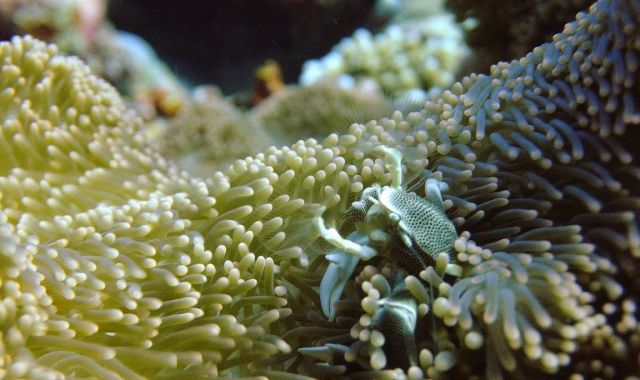
6 Feb 2020
The one awe-inspiring moment that stands out for me was diving a site called ‘Aquarium’ which was located on the outside of one of the islands in the North Male Atoll; famous for its manta cleaning station.
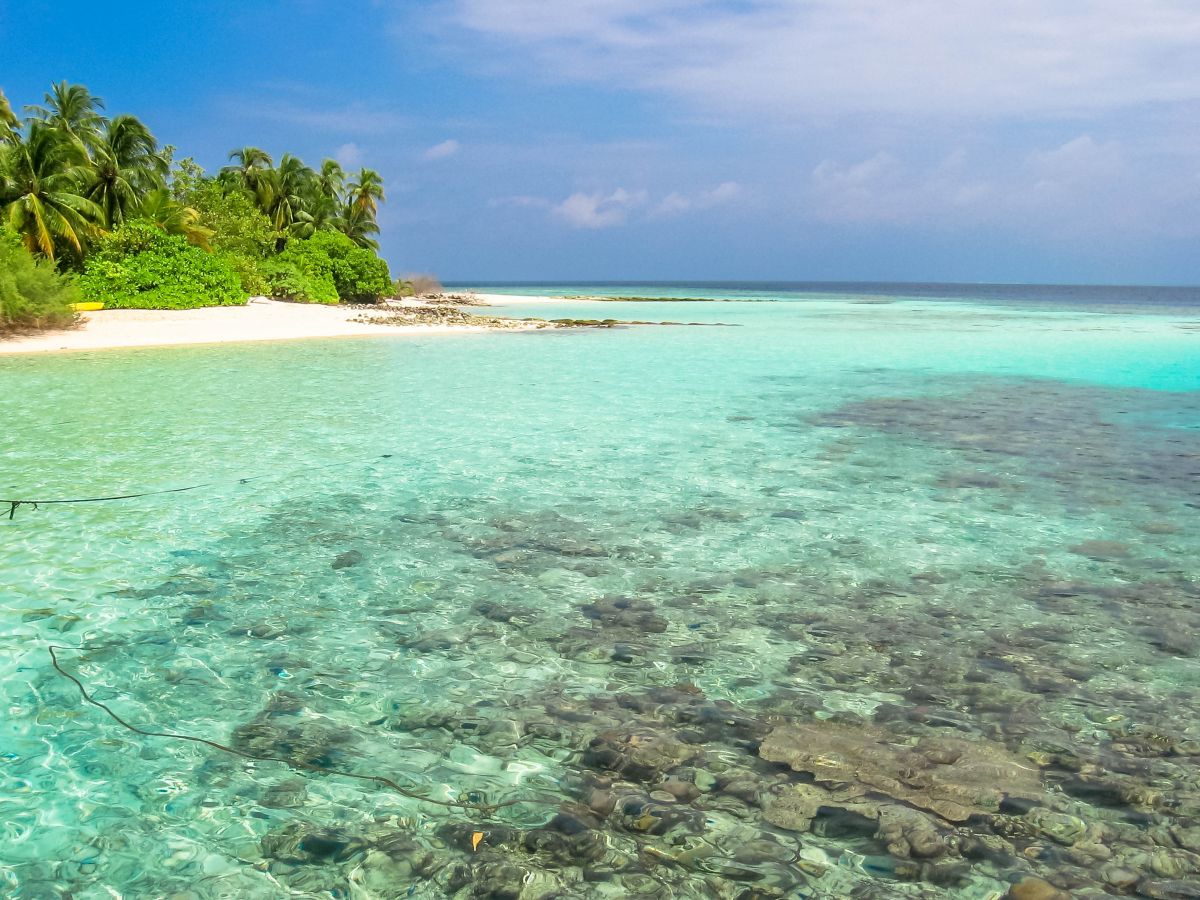
Before we even entered the water, a pod of spinner dolphins were jumping ahead of the boat. The captain turned off the engine and they appeared at the side of the boat.
Wetsuits donned and scrambling into our gear in the quickest time possible, we made the giant stride in on the corner of the reef.
I caught a very brief glimpse of the pod underwater before they clocked us and went into the blue.
As we made our descent, there were hard corals galore, decorated with anthias and surgeonfish swimming in the water column.
We went with the current, getting pushed along at quite a rate, so there was little time to observe the macro, though white-tip reef sharks and stingrays glided by.
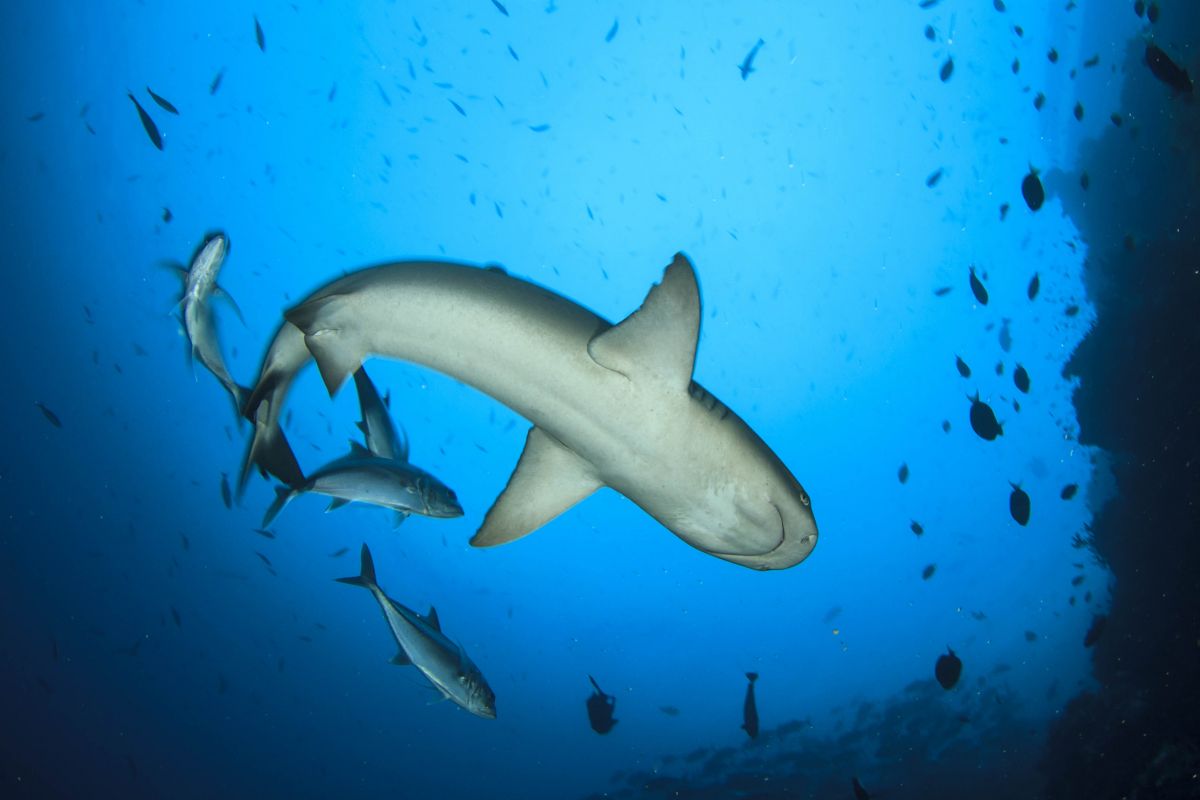
As we approached the ‘end’ of the reef, where it makes a sharp turn at 90 degrees, the manta station was there. Our leader made the signal to hook on with our reef hooks, my mask was being pushed off my face and my hair was doing a ‘medusa-like’ dance in the current, but I managed to find a rocky nook to hook on to. As we waited, within minutes two glorious manta rays came into view in the distance.
We watched as they did their graceful dance in the current and then they began coming towards us.
Closer and closer they came until I found myself staring at one face-to-face. It went right over the top of my head, casting a dark shadow beneath and at that moment I was only thinking about how lucky I was.
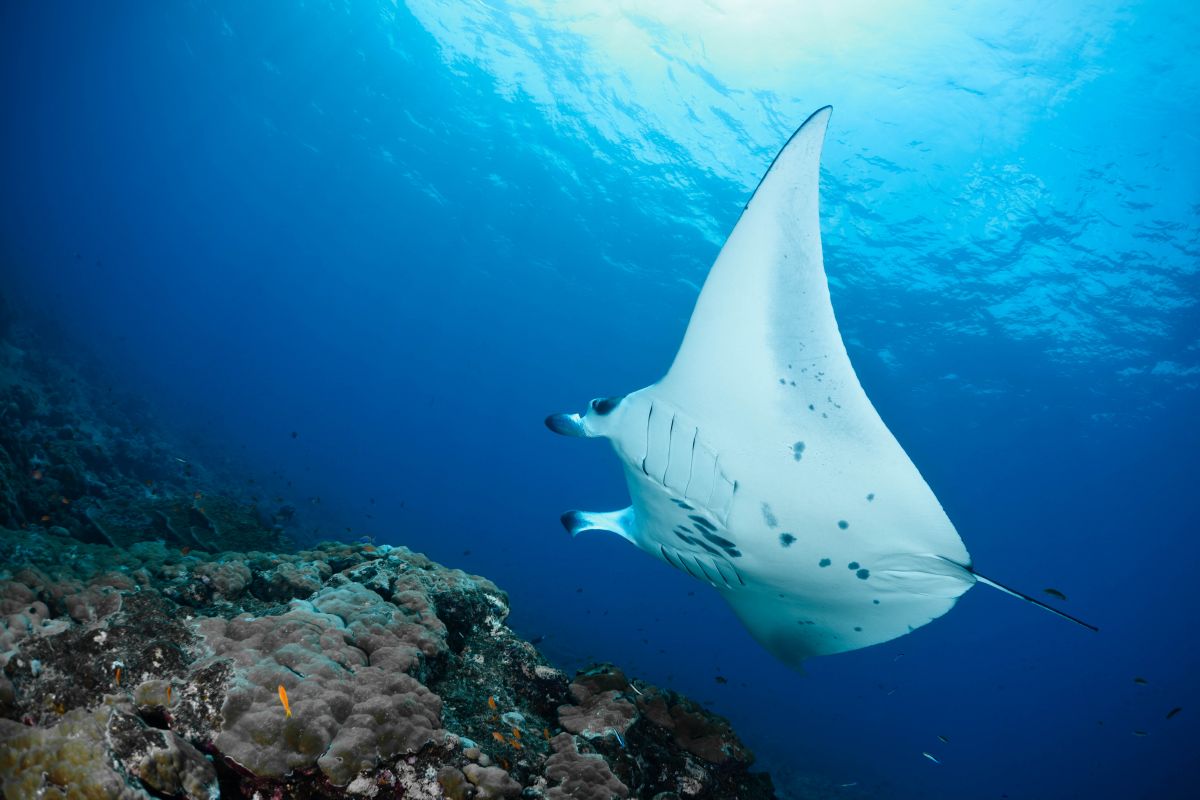
After the excitement of the mantas, the signal was made to un-hook and as I went to do so, I noticed a sea anemone to my right. Inside this anemone something was moving. It was a tiny porcelain crab.
The crab had its feather-like appendages out; filter-feeding from the water column. It was almost like it was a conductor in the orchestra.
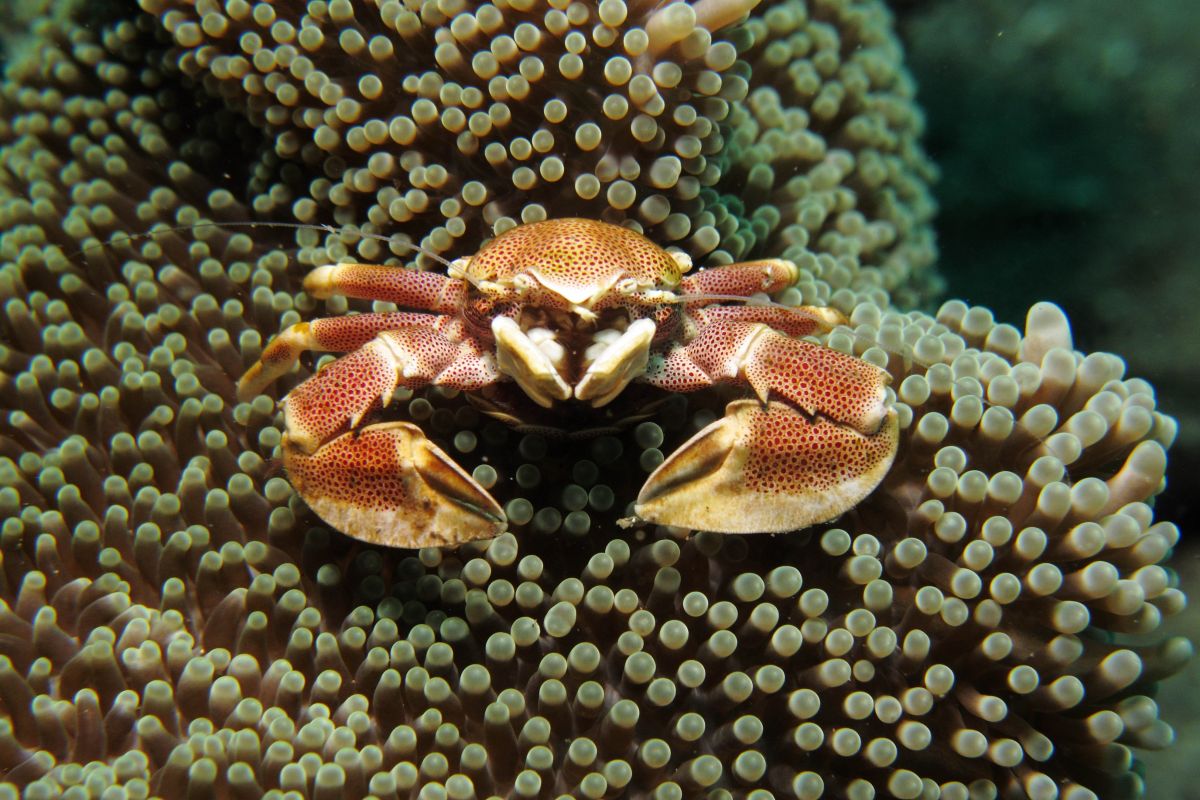
Such a beautiful dive, both big and small made an appearance and it is an experience that has stuck with me.
Take a look at our selection of resorts and liveaboards in the Maldives here, or for more information, speak to the Regaldive team today on 01353 659999.
(main image by Emily Chappell)



